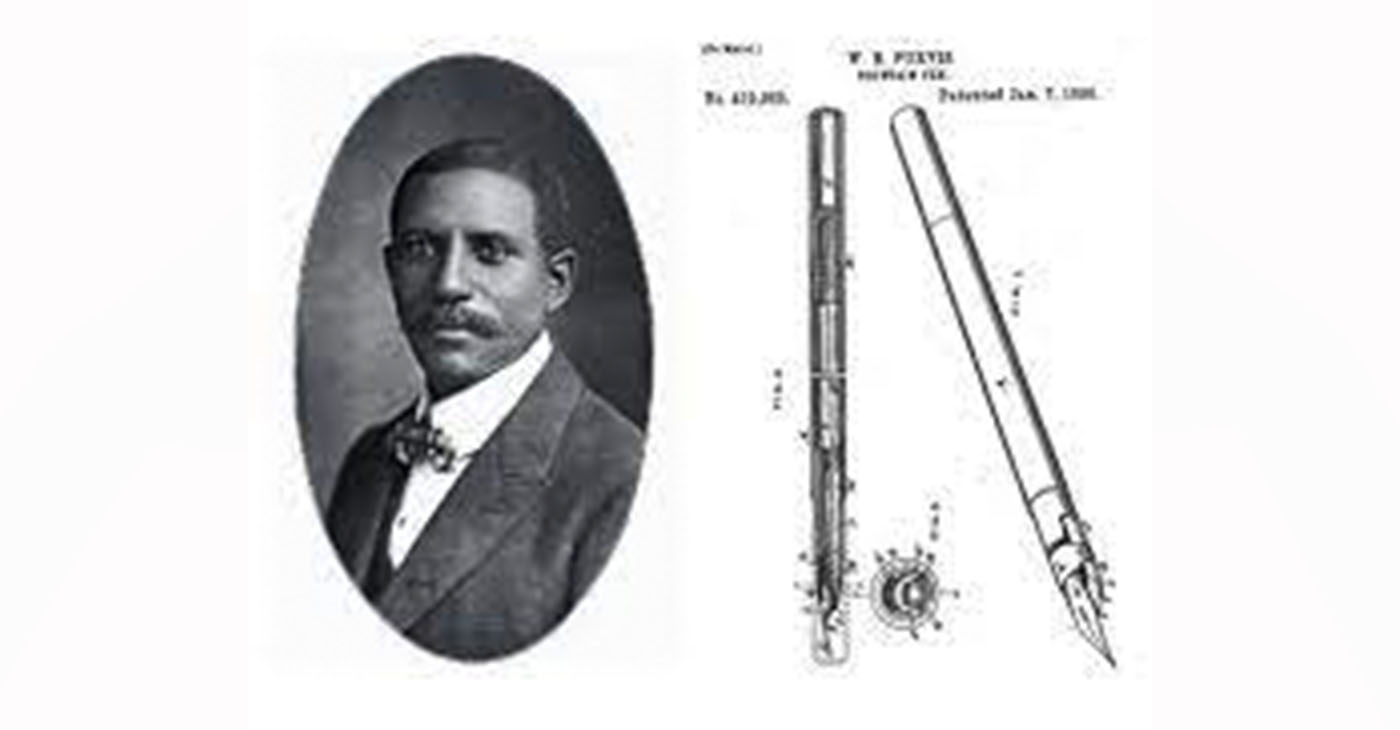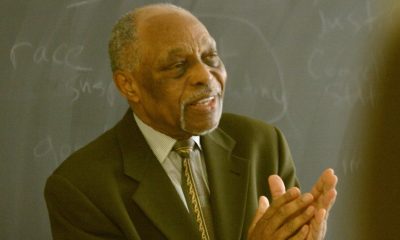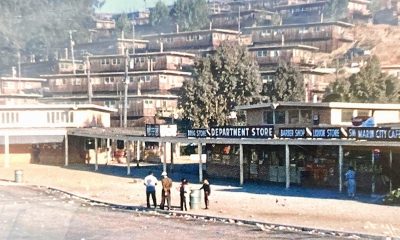Black History
The Inventive Genius of William B. Purvis: Transforming Industries and Daily Life
While the pages of history often spotlight well-known inventors, there are unsung heroes whose contributions have profoundly impacted our world. One such person is William B. Purvis, born in Philadelphia, Pennsylvania, into a wealthy and influential family, one of the eight children of Joseph Purvis, a farmer, and Sarah Louisa Forten Purvis, a noted poet.

By Tamara Shiloh
While the pages of history often spotlight well-known inventors, there are unsung heroes whose contributions have profoundly impacted our world.
One such person is William B. Purvis, born in Philadelphia, Pennsylvania, into a wealthy and influential family, one of the eight children of Joseph Purvis, a farmer, and Sarah Louisa Forten Purvis, a noted poet.
William’s maternal grandfather was African American sailmaker, merchant, philanthropist, inventor, civil rights agitator, and abolitionist James Forten. Born in 1838, William Purvis lived with his family on his father’s farm in Bucks County, Pennsylvania, until his father’s death in 1857 and the family moved to Philadelphia, where they lived with relatives.
Mostly self-taught, Purvis’ inventive career began in the packaging industry with his groundbreaking improvements to paper bags.
In 1883, he patented an innovative design for a machine that could produce paper bags with flat bottoms, which was a vast improvement over the traditional flat and cumbersome paper sacks.
His invention laid the foundation for the modern shopping bags we use today, with their capacity to stand upright and carry groceries and goods securely.
He was not content with revolutionizing just one industry. In 1890, he patented an innovative modification to the fountain pen, enhancing its functionality and efficiency.
His design addressed the issue of ink leakage, making fountain pens more reliable and convenient for everyday use. The improved fountain pen design made writing a smoother and more enjoyable experience, and it laid the groundwork for subsequent developments in pen technology.
In 1892, Purvis turned his inventive mind toward the world of office equipment. He patented an improved hand stamp that featured a unique ink-distribution mechanism.
This design ensured consistent and uniform ink distribution, preventing blotting and smudging. His hand stamp design found widespread application in businesses, government offices, and postal services, streamlining administrative processes and reducing errors.
Purvis’s creative genius wasn’t confined to everyday items; he also made a significant impact on public transportation.
In 1893, he patented a close-conduit electric railway system, a pioneering technology that transformed urban transportation. This system consisted of electric railways powered through underground conduits, eliminating the need for unsightly overhead wires.
Purvis’ invention made urban transportation more efficient, aesthetically pleasing, and environmentally friendly.
William Purvis never married. He spent his golden years with his sister Annie. He died on Aug. 10, 1914, in Philadelphia.
Activism
Oakland Post: Week of April 24 – 30, 2024
The printed Weekly Edition of the Oakland Post: Week of April 24 – 30, 2024

To enlarge your view of this issue, use the slider, magnifying glass icon or full page icon in the lower right corner of the browser window. ![]()
Activism
Oakland Post: Week of April 17 – 23, 2024
The printed Weekly Edition of the Oakland Post: Week of April 17 – 23, 2024

To enlarge your view of this issue, use the slider, magnifying glass icon or full page icon in the lower right corner of the browser window. ![]()
Black History
Matthew Henson: Explorer Extraordinaire
Matthew Henson, a trailblazing explorer who overcame countless obstacles to leave an incredible mark on history. Born on August 8, 1866, in Charles County, Maryland, his journey is a testament to the power of determination and the spirit of adventure.

By Tamara Shiloh
Matthew Henson, a trailblazing explorer who overcame countless obstacles to leave an incredible mark on history. Born on August 8, 1866, in Charles County, Maryland, his journey is a testament to the power of determination and the spirit of adventure.
Henson’s life began amidst the backdrop of post-Civil War America, where opportunities for African Americans were scarce. From a young age, he possessed an insatiable curiosity about the world beyond his small town. At the age of 12, he embarked on a journey that would change the course of his life forever when he joined a merchant ship as a cabin boy.
His most famous expedition was his journey to the Arctic with renowned explorer Robert E. Peary. In 1887, Henson joined Peary’s crew as a seaman and quickly proved himself to be invaluable with his skills as a navigator and craftsman. Over the course of several expeditions, Matthew endured extreme cold, treacherous terrain, and grueling conditions as he and Peary sought to reach the elusive North Pole.
In 1908–09, Peary set out on his eighth attempt to reach the North Pole. It was a big expedition, with Peary planning to leave supplies along the way. When he and Henson boarded their ship, the Roosevelt, leaving Greenland on August 18, 1909, they were joined by a large group. This included 22 Inuit men, 17 Inuit women, 10 children, 246 dogs, 70 tons of whale meat, blubber from 50 walruses, hunting gear, and tons of coal.
In February, Henson and Peary left their anchored ship at Ellesmere Island’s Cape Sheridan, along with the Inuit men and 130 dogs. They worked together to set up a trail and supplies along the way to the Pole.
Peary picked Henson and four Inuit people to join him in the final push to the Pole. However, before they reached their destination, Peary couldn’t walk anymore and had to ride in a dog sled. He sent Henson ahead to scout the way. In a later interview with a newspaper, Henson recalled being in the lead and realizing they had gone too far. The group turned back, and Henson noticed his footprints helped guide them to their destination. At that location, Henson planted the American flag.
Henson’s legacy extends far beyond his expeditions to the Arctic. He shattered racial barriers in the world of exploration and inspired countless individuals, regardless of race, to dream big and pursue their passions. In 1937, he was finally recognized for his achievements when he was inducted into The Explorers Club, an organization dedicated to promoting scientific exploration and field research.
Matthew Henson died in the Bronx, New York, on March 9, 1955, at the age of 88.
-

 Community2 weeks ago
Community2 weeks agoFinancial Assistance Bill for Descendants of Enslaved Persons to Help Them Purchase, Own, or Maintain a Home
-

 Activism3 weeks ago
Activism3 weeks agoOakland Post: Week of April 3 – 6, 2024
-

 Business2 weeks ago
Business2 weeks agoV.P. Kamala Harris: Americans With Criminal Records Will Soon Be Eligible for SBA Loans
-

 Activism2 weeks ago
Activism2 weeks agoOakland Post: Week of April 10 – 16, 2024
-

 Community2 weeks ago
Community2 weeks agoAG Bonta Says Oakland School Leaders Should Comply with State Laws to Avoid ‘Disparate Harm’ When Closing or Merging Schools
-

 Community1 week ago
Community1 week agoOakland WNBA Player to be Inducted Into Hall of Fame
-

 Community1 week ago
Community1 week agoRichmond Nonprofit Helps Ex-Felons Get Back on Their Feet
-

 Community2 weeks ago
Community2 weeks agoThe Year Ahead: Assembly Speaker Rivas Discusses Priorities, Problems
























































